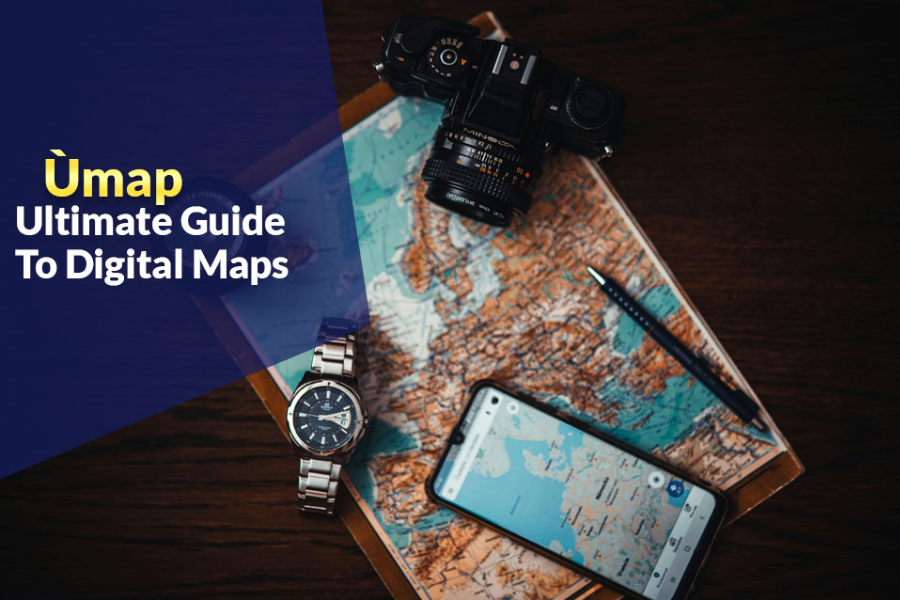Ùmap: A Complete Guide
Welcome to the period where advanced change has upset how we explore and investigate our general surroundings. Gone are the times of bulky paper guides and static map books. Enter Ùmap, a creative and versatile apparatus that is forming the fate of planning advancements, offering amazing capacities in information perception and topographical examination. Go along with us on this excursion as we dig into the development of planning, the ascent of flexible innovations, and how Ùmap is opening another range of potential outcomes.
Evolution Of Mapping: From Paper Maps To Digital Platforms
Planning has made some amazing progress since the days when travelers depended available attracted guides to graph obscure regions. The shift from conventional paper guides to dynamic computerized stages has totally re-imagined the manner in which we track down our direction and figure out spatial data.
The Era of Paper Maps
Before, exploring through urban communities, nations, or even the untamed oceans required broad dependence on actual guides. These guides, while wonderfully nitty gritty and frequently show-stoppers, were static and restricted in their capacity to give continuous data. Refreshing them was a sluggish cycle, frequently requiring manual redrawing or printing new versions.
The Digital Revolution
With the appearance of advanced innovations, planning has changed into an intelligent encounter. Today, computerized planning innovations give constant updates, 3D models, and worldwide satellite pictures, all open at the snap of a button. As of now not bound to a piece of paper, maps have become useful assets for investigating and grasping our reality in powerful ways. This progress has made route more helpful as well as prepared for imaginative methodologies in spatial examination and information perception.
As we keep on advancing, the potential for planning innovations is limitless. Arising progressions vow to additional improve our association with geological information, prompting new revelations and applications.
The Rise Of Versatile Mapping Technologies
In the present high speed computerized world, planning advancements have developed to turn out to be more remarkable and adaptable than any time in recent memory. These headways have changed the conventional planning experience into something undeniably more intuitive and available.
From Static to Interactive
The progress from static paper guides to intelligent web stages has been progressive. Instruments like GIS (Geographic Data Frameworks), VR maps, and online intelligent guides have changed the game, empowering clients to make, redo, and share their own guides easily. These innovations are not only for individual use; they offer critical benefits for organizations and associations across different businesses, upgrading information bits of knowledge and dynamic cycles.
Spatial Analytics and Business Insights
By coordinating spatial examination into planning innovations, organizations can acquire a more profound comprehension of information, prompting more educated choices. Whether it’s for metropolitan preparation, coordinated operations advancement, or fiasco reaction, these apparatuses have become fundamental in further developing proficiency and adequacy. As innovation keeps on advancing, we can expect considerably additional notable developments that will reform our utilization of topographical information.
Types Of Ùmap
Ùmap stands separated as an adaptable arranging instrument, offering an extent of purposes and functionalities. It enables clients to examine and unravel geographical data in new and critical ways.
Geographic Data Frameworks (GIS)
GIS has changed how we work with land data. It grants clients to make modified maps that deal with express necessities, making it a critical instrument for course, data portrayal, and land assessment. By overlaying different instructive lists, GIS helps clients with separating examples and models that most likely will not be obvious with standard aides. This makes it an essential gadget for metropolitan coordinators, regular bosses, and emergency responders.
Virtual And Augmented Reality Maps
Virtual and increased reality maps have presented another degree of intuitiveness and inundation. VR maps permit clients to investigate exact 3D conditions from the solace of their homes or workplaces, giving an itemized perception of insides, cityscapes, and scenes. AR maps, then again, upgrade this present reality by overlaying advanced data onto actual environmental factors utilizing AR gadgets and cell phones. This innovation has tremendous applications in fields like schooling, gaming, the travel industry, and route, offering a really captivating method for connecting with topographical information.
Interactive Web Ùmaps
Intuitive web maps have made it more straightforward than at any other time to investigate and explore geological information. These devices permit clients to make, adjust, and share maps internet, adding different layers of information like segment data and natural variables. The capacity to collaborate with geographic data in a unique manner, incorporating focusing in on unambiguous regions and getting to continuous information, makes these guides unquestionably helpful for different applications, from metropolitan wanting to sporting exercises.
Advantages Of Using Ùmap
Envision having the option to picture information in a totally new light, acquiring bits of knowledge, and settling on choices with unmatched clearness. This is the commitment of Ùmap, an incredible asset for geological examination, information perception, and route.
Real-Time Updates and Dynamic Information
One of the essential benefits of Ùmap is its capacity to give constant updates and dynamic data. Whether following traffic designs, observing ecological changes, or investigating market patterns, clients approach the most recent information readily available. This helps keep clients on the ball and educated regarding any progressions that might influence their exercises or choices.
Customization and Flexibility
Ùmap’s customization capacities are a significant feature. Clients can make maps custom fitted to their particular necessities, changing markers and layers and adding intuitive components like pop-ups and connects. This adaptability considers a profoundly customized planning experience, taking care of a large number of uses from business to relaxation.
Collaborative Capabilities
The cooperative elements of Ùmap make sharing and altering maps a breeze, cultivating collaboration and local area commitment. These apparatuses empower continuous joint effort on intelligent web maps, which altogether further develops correspondence and productivity in different fields, from calamity reaction to city arranging.
Applications In Various Industries
The coming of flexible planning innovations has opened up an abundance of chances across various areas, changing the manner in which organizations and associations work.
Urban Planning and Development
In metropolitan preparation and improvement, planning advances assist with envisioning city formats, plan framework projects, and examine traffic streams. These instruments take into account more educated navigation and effective arranging processes, at last prompting better-planned metropolitan spaces.
Healthcare
In medical care, planning innovation is pivotal for following sickness episodes, streamlining the position of medical care offices, and further developing crisis reaction times. By dissecting spatial information, medical services suppliers can settle on better choices in regards to asset designation and patient consideration.
Retail and Marketing
Retailers use planning innovations to figure out buyer conduct, recognize target socioeconomics, and select ideal areas for new stores. This assists organizations with expanding their compass and better serve their clients.
Agriculture
Accuracy agribusiness benefits massively from planning innovations, which empower ranchers to investigate soil conditions and dispense assets all the more successfully. This prompts further developed crop yields and more reasonable cultivating rehearses.
Disaster Management
In a debacle the board, constant planning information is fundamental for organizing salvage endeavors and evaluating harm. These advances assist crisis responders with responding all the more rapidly and proficiently, saving lives and diminishing the effect of catastrophes.
Challenges And Limitations
Notwithstanding the many advantages of adaptable planning innovations, there are difficulties and restrictions that clients should explore.
Steep Learning Curve
One common challenge is the steep learning curve associated with complex GIS software or VR map interfaces. This can deter some users from fully utilizing these tools for geographical analysis, data visualization, and navigation.
Data Accuracy Issues
Another constraint is the potential for off base planning information, which can emerge from erroneous information passage or obsolete data. This is especially hazardous in fields that require exact planning, like crisis reaction or metropolitan preparation, where precision is critical.
Integration and Privacy Concerns
Incorporating different datasets from different sources into a durable guide can innovatively challenge. Moreover, there are moral contemplations in regards to protection while utilizing planning advances, particularly concerning the exposure of delicate geological data and area following.
In spite of these difficulties, continuous progressions in innovation expect to resolve these issues and upgrade the adequacy of adaptable planning frameworks later on.
Future Developments And Innovations
We are on the brink of exciting advancements in mapping technology that promise to reshape the way we create and use maps.
AI and Machine Learning Integration
The combination of man-made intelligence and AI innovations into planning frameworks is a distinct advantage. These advances can computerize information refreshes continuously, furnishing clients with the latest data consistently. Upgraded 3D planning capacities will offer a more vivid and drawing in navigational experience.
Enhanced Geospatial Visualization
Improved geospatial perception devices will empower more point by point and precise dynamic in fields like metropolitan preparation and fiasco the board. The combination of planning innovation with Web of Things (IoT) gadgets will open up new open doors for brilliant urban areas and productive asset the board.
What’s in store holds enormous potential for adaptable planning advancements to grow their abilities and track down new applications across different areas, driving development and working on our connection with geological information.
Conclusion
As we finish up our investigation into the domain of adaptable planning advances, it is apparent that apparatuses like Ùmap are changing the manner in which we cooperate with and figure out spatial information. From the progress of static paper guides to intelligent computerized stages, we have seen huge headways in planning innovation. The multiplication of intelligent web maps has additionally upgraded availability and client experience, making topographical information more unique and locking in.
While there are provokes and constraints to survive, for example, information precision and protection concerns, the fate of planning innovation is brilliant. With the joining of simulated intelligence, AI, and other arising advancements, the abilities of adaptable planning apparatuses are set to extend much further.
Since we take care of the nuts and bolts of spatial examination and information representation, we welcome you to plunge further into cutting edge points and tackle the force of adaptable planning instruments like Ùmap for your own applications.
FAQs
What Does Ùmap Stand For?
Ùmap is derived from the word “map,” emphasizing its core function as a dynamic mapping platform.
What Can Users Do With Ùmap?
Ùmap allows users to create, customize, and share online interactive maps for various purposes, including navigation, data visualization, and geographical analysis.
How Is Ùmap Revolutionizing The Digital Age?
Ùmap is transforming how we interact with maps by providing a flexible and powerful tool for navigation and data visualization, enabling users to engage with geographical information in innovative ways.
As technology continues to evolve, the potential for flexible mapping tools like Ùmap is boundless, promising to revolutionize our interaction with the world around us.
Stay connected to get more updates tribuneheadline.com





